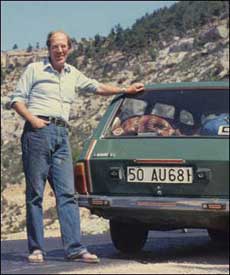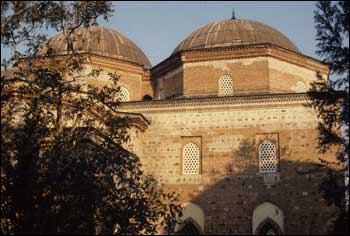Tony Landreau Collection on Turkish Carpet Weaving and Village Life

Tony Landreau (Image not in database)
Anthony Norman Landreau, known as Tony, was born in Washington D.C. on April 2, 1930. In the 1940s, he was attracted to abstract impressionist painting and moved to New York to study with such artists as Robert Motherwell, Franz Kline, and Jackson Pollock. In particular, he trained with Willem de Kooning. During this period, he opened a studio near Dupont Circle, but made most of his living from restoring oil paintings.
In 1953, Tony become a student at Black Mountain College, an experimental educational community that survived from 1933-1957. Despite limited funding, the College attracted exceptional teachers, including Annelise Albers, a textile artist and print-maker, choreographer Merce Cunningham, Willem and Elaine de Kooning, Buckminster Fuller, the architect, inventor and futurist, composer John Cage, poet Charles Olson, artist Robert Rauschenberg Theodoros Stamos, an abstract expressionist artist, and German avant-garde composer Stefan Wolpe. During his stay, he discovered hand looms and developed a lasting interest in hand weaving. Preferring a freer and less structured life, Tony left. During the rest of the 1950s, he lived in Venice Beach, California, making his living as an artist. He returned on Washington D.C. in the early 1960s.
Next, Tony worked in Bolivia for a year helping develop a weaver's cooperative. Following that experience, he returned to Washington D.C. First, he become a curator at the Textile Museum, and in 1971 stepped up to be its Director. Tony focused on membership and fundraising drives, traveling exhibitions, and weekend "talks" for the public. His efforts increased attendance from 5,000 to an estimated 25,000 per year. In the later 1970s, he held a position as curator of education at the Carnegie Museum in Pittsburgh.
During this period, Tony developed an intense interest in Turkish weaving. During several trips to Turkey, he surveyed weaving in Turkey's southern and eastern provinces. This was deliberate, since Walter B. Denny was conducting a similar survey in the western provinces. Many of Prof. Denny's images can be seen in ArtStor. In addition to photographing rugs and other hand woven products, Tony extensively photographed village life and historical sites.
Potentially greener pastures called, and Tony started a business selling Turkish rugs.
Unfortunately, his sales skills were not as well honed as his knowledge of rugs. The business
failed. Nevertheless, in retirement, he enrolled in a Ph.D. program in anthropology at Temple
University in Philadelphia. In 1996, he completed his dissertation: Anatolian rug weaving:
Mirror of change, which is available in Dissertations & theses full text (CLP ACCESS) -  UW restricted.
UW restricted.
In 1988, Tony moved to Yakima. He became a popular anthropology and sociology professor at Yakima Valley Community College. He died May 30, 2009, from lung cancer.
As times and the economic situation changed in Turkey, village weaving for personal use was largely abandoned. Many of the areas shown are now much more developed. These photographs are a record of a craft that is largely gone and of rural conditions that have substantially changed.



